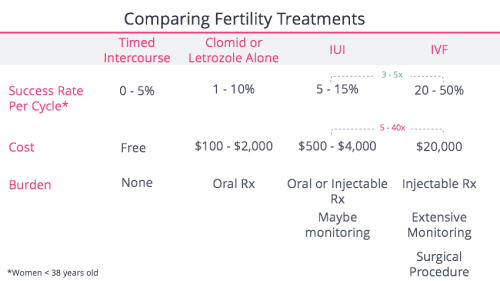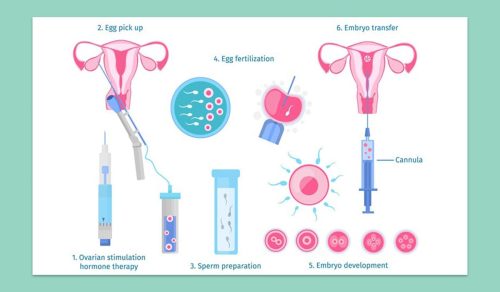How to Calculate Your Due Date for IVF: A Complete Guide for Expecting Parents
Congratulations! If you’re reading this, you’re likely on an exciting journey through in vitro fertilization (IVF) and dreaming about the day you’ll meet your little one. One of the first questions that pops up after a successful embryo transfer is, “When will my baby arrive?” Unlike natural pregnancies, where due dates can feel like a guessing game, IVF offers a unique advantage: you know exactly when conception happens. That means calculating your due date can be more precise—and a little less mysterious.
In this guide, we’ll walk you through everything you need to know about figuring out your IVF due date. From the basics of how it’s calculated to insider tips that most articles skip over, we’ve got you covered. Whether you’re a first-timer or a seasoned IVF parent, you’ll find practical advice, fresh insights, and even a few fun extras to make this process feel less overwhelming and more empowering. Let’s dive in!
Why IVF Due Dates Are Different (and Why That’s a Good Thing)
With a natural pregnancy, doctors usually estimate your due date based on the first day of your last menstrual period (LMP). It’s a rough starting point—assuming you ovulated around day 14 of a 28-day cycle. But let’s be real: not everyone’s cycle is textbook-perfect, and pinpointing the exact moment of conception can be tricky.
IVF flips that script. Because fertilization happens in a lab and the embryo is transferred on a specific day, you’ve got a front-row seat to the start of your pregnancy. No guesswork about ovulation or wondering when the magic happened—it’s all documented. This precision is a game-changer, giving you a clearer picture of when your baby might arrive.
But here’s the catch: the way your due date is calculated still depends on a couple of key details, like whether you had a fresh or frozen embryo transfer and how many days old your embryo was when it was transferred. Don’t worry—we’ll break it all down step by step.
The Basics: How IVF Due Dates Are Calculated
Calculating your IVF due date isn’t rocket science, but it does involve a simple formula based on two things: the date of your embryo transfer and the age of the embryo at transfer. Most clinics transfer embryos either 3 days or 5 days after fertilization, and that timing shifts your due date slightly.
Here’s the gist: a full-term pregnancy lasts about 40 weeks (or 280 days) from the day of conception. In IVF, “conception” is the day the egg meets the sperm in the lab. But since embryos aren’t transferred right away, we adjust the timeline based on when they’re placed in your uterus.
Day 3 vs. Day 5 Transfers: What’s the Difference?
- Day 3 Transfer: If your embryo was transferred 3 days after fertilization, it’s been growing for 3 days outside your body. To find your due date, add 263 days to the transfer date. Why 263? That’s 280 days (full term) minus the 3 days the embryo already developed.
- Day 5 Transfer: For a 5-day transfer (also called a blastocyst transfer), the embryo has had 5 days of growth before it’s transferred. So, you add 261 days to the transfer date (280 minus 5).
Quick Example
Let’s say your Day 5 transfer happened on April 10, 2025. Add 261 days, and you land on December 27, 2025. That’s your estimated due date! For a Day 3 transfer on the same day, you’d add 263 days, landing on December 29, 2025. See how those two days make a difference?
Fresh vs. Frozen Embryo Transfers
- Fresh Transfer: In a fresh cycle, eggs are retrieved, fertilized, and transferred within a few days. The due date clock starts ticking from the transfer date, adjusted for the embryo’s age (Day 3 or Day 5).
- Frozen Embryo Transfer (FET): With FET, embryos are frozen and transferred later, sometimes months or years after fertilization. The due date is still calculated from the transfer date, not the original fertilization date, using the same Day 3 or Day 5 formula.
Fun fact: Studies show FET babies might arrive a tad later than fresh transfer babies—sometimes closer to 39 or 40 weeks—because the uterine lining can be optimized for implantation. More on that later!
Step-by-Step: How to Calculate Your IVF Due Date
Ready to figure out your baby’s big day? Grab a calendar and follow these steps. It’s easier than planning a family vacation (and way more exciting).
Step 1: Know Your Transfer Date
Check with your clinic for the exact date your embryo was transferred. This is your starting point. Let’s use April 10, 2025, as our example.
Step 2: Identify the Embryo Age
Was it a Day 3 or Day 5 transfer? Your doctor or embryologist will have this info. For our example, let’s say it’s a Day 5 transfer.
Step 3: Add the Magic Number
- For Day 3: Add 263 days to the transfer date.
- For Day 5: Add 261 days to the transfer date.
So, April 10, 2025 + 261 days = December 27, 2025.
Step 4: Double-Check with Your Clinic
Your fertility team might tweak the date slightly based on early ultrasounds or other factors. It’s always smart to confirm with them.
Handy Tip
If math isn’t your thing, tons of online IVF due date calculators can do the heavy lifting. Just plug in your transfer date and embryo age, and voilà—your due date pops up. But knowing how it works gives you that extra confidence.
What If You Used Donor Eggs or a Surrogate?
IVF isn’t one-size-fits-all, and that’s part of its beauty. If your journey involves donor eggs or a surrogate, the due date calculation stays pretty much the same—it’s still tied to the transfer date and embryo age. Here’s how it shakes out:
- Donor Eggs: The egg donor’s cycle doesn’t affect the due date. It’s all about when the embryo (made from the donor egg and sperm) is transferred to you or a surrogate.
- Surrogacy: If you’re working with a gestational carrier, the due date is calculated from the day the embryo is transferred to her uterus, using the Day 3 or Day 5 rule.
The process is consistent, no matter who’s carrying the baby. Pretty cool, right?
Interactive Quiz: Test Your Due Date Skills!
Let’s make this fun. Take a quick stab at calculating a due date with this mini-quiz:
Scenario: Your friend had a Day 3 embryo transfer on May 15, 2025. When’s her due date?
- A) January 30, 2026
- B) February 1, 2026
- C) February 3, 2026
Answer: Add 263 days to May 15, 2025. That lands on February 2, 2026. (The closest answer is B, but it’s off by a day—calendar math can be sneaky!) Check your work with a calculator to be sure.
How’d you do? Share your guess in the comments—I’d love to hear!
Beyond the Basics: Factors That Might Shift Your Due Date
Okay, so you’ve got the formula down. But life (and pregnancy) isn’t always that predictable. Here are some curveballs that could nudge your due date—and why they matter.
Early Ultrasounds: The Reality Check
About 7-10 weeks after your transfer, your doctor will likely schedule an ultrasound. They’ll measure your baby’s crown-to-rump length (head to bottom) to see if the growth matches the expected timeline. If your little one is measuring a few days ahead or behind, they might adjust your due date. Studies from the American College of Obstetricians and Gynecologists (ACOG) back this up—early ultrasounds are gold for fine-tuning dates.
Multiples: Double (or Triple) the Fun
If you transferred more than one embryo and both stuck, congrats—you’re having twins (or more)! Multiples often arrive earlier, around 37-38 weeks, because they run out of room faster. Your due date stays the same on paper, but your doctor will keep a close eye on things.
Fresh vs. Frozen: A Hidden Twist
Research from the journal Human Reproduction (2020) found that FET pregnancies might go a bit longer than fresh ones—sometimes by a few days. Why? Frozen cycles let doctors time the transfer perfectly with your uterine lining, which could give your baby a cozier start. It’s not a huge shift, but it’s worth noting.
Real-Life Example
Take Sarah, who had a Day 5 FET on March 1, 2025. Her calculated due date was November 17, 2025. But her 8-week ultrasound showed the baby measuring 3 days ahead, so her doctor bumped it to November 14. Small changes, big excitement!
When Will Your Baby Actually Arrive?
Here’s the million-dollar question: Will your baby stick to the due date? Spoiler alert: Probably not. Only about 4-5% of babies arrive on their exact due date, according to the March of Dimes. With IVF, you’ve got a tighter timeline, but your little one still gets a say.
- IVF Singleton Stats: Most single IVF babies arrive between 37 and 39 weeks, a bit earlier than the 40-week average for natural pregnancies.
- Multiples: Twins often show up around 36-38 weeks, while triplets might come as early as 34-36 weeks.
Your doctor will monitor you closely, especially if you’re on progesterone supplements or have a history of preterm labor. The goal? A healthy delivery, whenever it happens.
Unique Insight #1: The Emotional Side of Knowing Your Due Date
Most articles focus on the math, but let’s talk about the feels. Knowing your IVF due date can be a rollercoaster. After months (or years) of uncertainty, that date is a tangible milestone—a light at the end of the tunnel. But it can also spark anxiety. What if things don’t go as planned?
Here’s a tip: Treat your due date like a fun deadline, not a hard rule. Circle it on your calendar, plan a little celebration for that week, and let it be a symbol of hope—not pressure. One mom I know baked “due date cupcakes” every day of her 39th week. Spoiler: Her baby arrived on cupcake day three!
Unique Insight #2: How Your IVF Protocol Affects Timing
Something you won’t find in every guide: the type of IVF cycle you did might subtly influence when your baby arrives. For example:
- Natural Cycle IVF: If you skipped stimulation meds and used your body’s natural egg, implantation might mimic a natural pregnancy more closely, potentially stretching closer to 40 weeks.
- Medicated FET: Hormones like progesterone can create an “ideal” uterine environment, sometimes leading to a slightly longer gestation, per a 2021 study in Fertility and Sterility.
It’s not a dealbreaker, but it’s a fascinating layer to consider. Chat with your doctor about how your protocol might play a role.
Practical Tips: Making the Most of Your Due Date
Now that you’ve got your date, what’s next? Here are some hands-on ideas to prep like a pro:
✔️ Track Your Milestones: Mark your calendar with key dates—first ultrasound, anatomy scan (around 20 weeks), and when you’ll switch from your fertility clinic to an OB-GYN (usually 8-10 weeks post-transfer).
✔️ Plan Your Reveal: Decide when to share your due date with family and friends. Some wait until the 12-week mark when miscarriage risk drops.
❌ Don’t Obsess: It’s tempting to count every day, but babies love surprises. Focus on the journey, not just the finish line.
✔️ Prep Early: IVF pregnancies can sometimes mean earlier deliveries, especially with multiples. Get your nursery basics ready by 32 weeks, just in case.
Bonus: A Simple Due Date Tracker
Here’s a quick table to visualize your timeline, based on a Day 5 transfer on April 10, 2025:
| Milestone | Date (Approx.) | What’s Happening? |
|---|---|---|
| Transfer Day | April 10, 2025 | Embryo snuggles into your uterus |
| Positive Test | April 24, 2025 | HCG blood test confirms pregnancy |
| First Ultrasound | May 15, 2025 | See your baby’s heartbeat! |
| 12 Weeks | July 3, 2025 | End of first trimester |
| Due Date | December 27, 2025 | Time to meet your little one! |
Adjust the dates based on your transfer day and embryo age. It’s a fun way to see the big picture!
Unique Insight #3: The Role of Stress and Self-Care
Here’s something rarely discussed: how you feel during your IVF pregnancy might influence your delivery timing. A 2022 study in Psychoneuroendocrinology found that high stress levels in early pregnancy could increase the odds of preterm birth, even in IVF cases. The theory? Stress hormones like cortisol might signal your body to kick things off early.
So, what can you do? Lean into self-care. Try these:
- Mini Meditation: Five minutes of deep breathing daily can lower cortisol, per research from UCLA.
- Partner Support: Ask your partner to take on extra chores around your due date window. Teamwork makes the dream work!
- Journaling: Write down your hopes and worries. It’s like a free therapy session.
One couple I heard about started a “countdown jar”—each week, they added a note with something they were excited about. By the due date, they had a jar full of joy to read together.
Interactive Poll: When Will You Share Your Due Date?
Let’s get you involved! When do you plan to tell people your due date?
- A) Right after the positive test
- B) After the first ultrasound
- C) At 12 weeks
- D) Only when the baby’s here!
Drop your answer in the comments—I’m curious to see what you pick!
Busting Myths: What You Might’ve Heard About IVF Due Dates
There’s a lot of chatter out there, so let’s clear up some common misconceptions:
❌ Myth: IVF babies always come early.
Truth: While multiples might, singletons often go full term or close to it—37-39 weeks is typical.
❌ Myth: Your due date won’t change.
Truth: Ultrasounds or unexpected twists (like preterm labor) can shift it. Flexibility is key.
❌ Myth: FET due dates are less accurate.
Truth: They’re just as precise as fresh transfers, since the transfer date is the anchor.
The Science Behind It: What Research Says
Let’s geek out for a sec. The ACOG recommends using the embryo age and transfer date for IVF due dates because it’s more reliable than LMP-based guesses. A 2017 study in Ultrasound in Obstetrics & Gynecology found that IVF pregnancies dated this way had a 95% accuracy rate within 7 days of the actual birth—way better than the 85% for natural pregnancies.
Plus, a 2023 analysis from The Lancet noted that IVF babies from frozen cycles had a slightly higher birth weight and gestational age than fresh ones. Why? Possibly because FET lets doctors sync the embryo with a rested, hormone-primed uterus. Science is wild!
Your IVF Due Date and Beyond: What to Expect
As you get closer to your due date, things get real. Your fertility clinic will hand you off to an OB-GYN, and you’ll start the classic prenatal routine—monthly visits, then weekly as you near the end. Here’s a peek at what’s ahead:
- 20-Week Scan: The big anatomy check. You might find out the gender if you want!
- Third Trimester: More frequent monitoring, especially if you’re carrying multiples or had complications like bleeding.
- Delivery Day: Whether it’s a C-section (common with IVF multiples) or vaginal birth, your team will be ready.
A Mom’s Story
Meet Jen, who had a Day 5 FET in June 2024. Her due date was March 12, 2025, but twins had other plans—they arrived February 28 after a surprise early labor. “Knowing my due date helped me plan, but I learned to roll with it,” she says. “Those extra weeks of prep saved my sanity!”
Wrapping Up: Your Due Date Is Just the Beginning
Calculating your IVF due date is like plotting a treasure map—X marks the spot where you’ll meet your baby. With the transfer date and embryo age in hand, you’ve got a solid starting point. But as you’ve seen, it’s not set in stone. Ultrasounds, multiples, and even your stress levels can tweak the timeline. And that’s okay—it’s all part of the adventure.
So, grab your calendar, crunch those numbers, and start dreaming about that first cuddle. You’ve got this! Have questions or a due date story to share? Pop it in the comments—I’d love to chat. Here’s to you and your little miracle-in-the-making!




